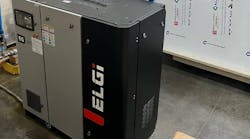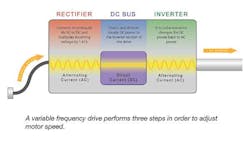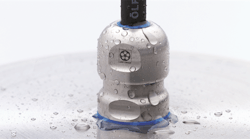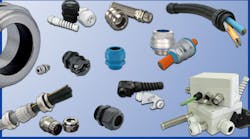Your facility is probably full of variable frequency drives, from blowers and fans to conveyors and pumps. As their name suggests, these drives can adjust motor speed and torque in electrical and electronic devices. Adjusting the motor speed to match equipment allows for smoother operation.
Even if you’re not an electrical engineer, you've probably experienced how VFDs work on a daily basis and how they've changed everyday motorized equipment, such as elevators.
“Twenty-five years ago, if you took an elevator from the ground floor to another floor, it felt a little bumpy,” says Lucas Kehl, a product manager for Lapp Group USA, referring to the days before the widespread use of VFDs.
“Now when you do that, it’s really smooth.”
This is achieved by the drive converting incoming AC power to DC, and then inverting back over to three-phase output power. By directly controlling the voltage and frequency of the inverted output power, the VFD can control the motor speed.
According to AutomationDirect, this can use up to 4% of the power that would go to the motor if a VFD was not present. Thus, motors running full speed all the time might not benefit from these drives.
For certain equipment though, such as centrifugal fans or pumps, VFDs can cut energy consumption and increase motor life.
One thing to consider with VFDs is what ties these drives to their motors. Kehl says that distance can be anywhere from 12 to 1,200 feet, meaning the connector cables slinking through your plant or factory need to be that long.
For some cables, this journey could be harrowing. Who knows what could interfere with that poor electrical pulse on its journey? Oil, fire, sunlight, and moving machinery can really damage your cables.
Because of that, you’ll want the right cable suited for the job.
Here are four ways to do that:
1. Choose Your Cable Insulation Material Wisely
The insulation material surrounds the copper wire in the cable and determines the dielectric constant, which is the quantity of electrical energy the cable can store.
“The lower the dielectric constant, the better it is in terms of all the electrical properties like voltage drop,” Kehl says.
With an electric brake that requires 24V, for instance, you need to ensure the motor gets all 24V, not a lesser voltage that could cause the machinery to fail, Kehl says.
For that reason, Lapp has created a proprietary cross-linked polyethylene, or XLPE, called XLPE (Plus) for its ÖLFLEX VFD 2XL cable. Because of the material, it can support 600, 1,000, and 2,000V-rated cables, while staying the same diameter—reducing the overall footprint and allowing these cables to be used in more automotive applications that use 690V motors.
The smaller ÖLFLEX VFD SLIM, perfect for small spaces, uses a PVC/nylon insulation and a thermoplastic semiconducting layer, called surge guard, in between the insulation and conducting wire that guards against high voltage spikes. This diffuses the bolt of energy and prevents insulation damage. This layer also has superior crush and impact resistance, according to Lapp.
2. Deploy a Proper Shield Defense
VFD drives create a lot of electric chatter during use, and that could cause trouble for other systems if not accounted for.
“VFDs are trouble makers,” Kehl says.
“They have a high electromagnetic interference potential. That could affect the signal on the data transmission protocol, and could completely change its value, so the overall system would think there’s a different value at the end. And that’s actually the most critical part.”
To overcome this, the ÖLFLEX line he manages employs Super EMI, a combination of tri-laminate foil tape and tinned copper braid. This provides a two-tiered defense allowing for unparalleled transfer impedance, which you want to be low, and higher screening attenuation which is also desirable.
3. Pick the Right Jacket
This is the outer coating of a cable and the first line of defense against all the variables in your environment. PVC recipes can all be tweaked to make them flame retardant or sun resistant.
The ÖLFLEX VFD SLIM uses a thermoplastic polymer jacket, which has a 167°F (75°C) wet/dry rating. The 2XL uses a thermoplastic elastomer and has a 194°F (90°C) wet/dry rating.
Both offer flexibility which is needed to curve around tight bends and overall, make installation easier. They also stand up to sunlight, resist flames, endure coolants, and withstand crush and impact forces. Kehl mentioned the longest VFD cables, nearly a quarter-mile long, are used in mining operations.
For more help picking out the right VFD cable, visit Lapp's VFD Cable Selector Catalog.

















